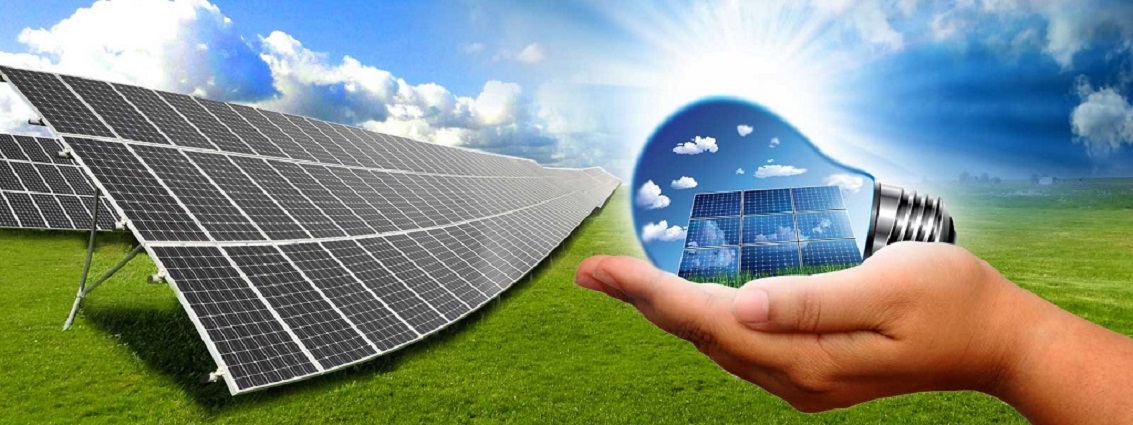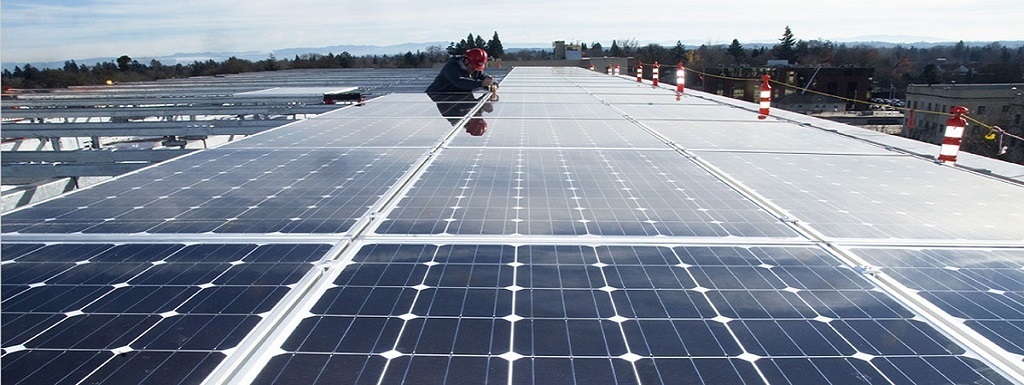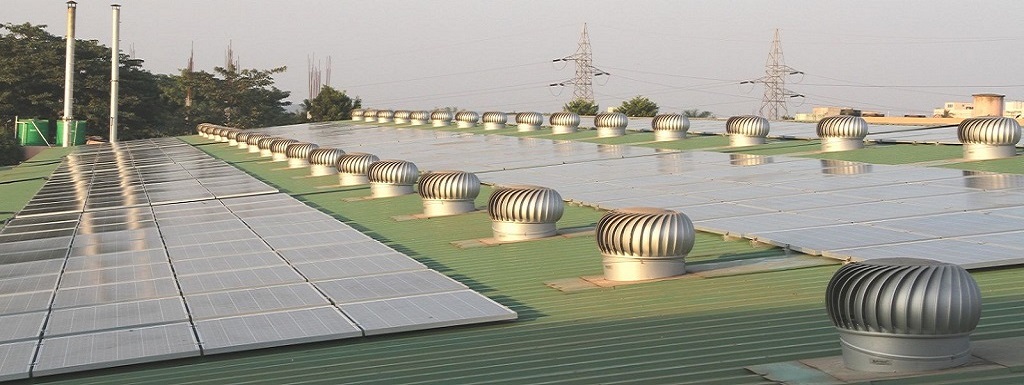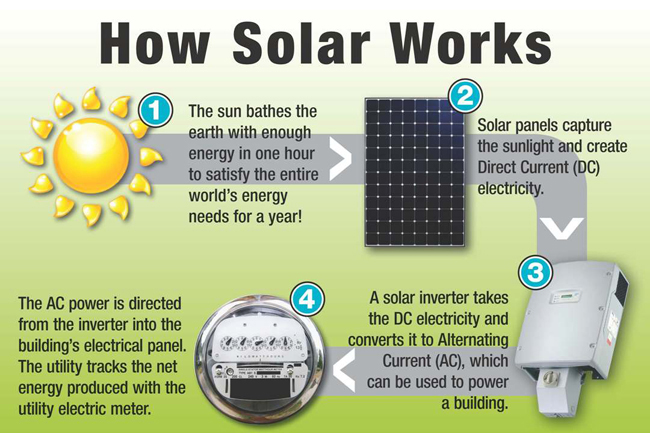Solar Energy
Solar Energy is the conversion of energy from sunlight into electricity, either directly using photovoltaics (PV), indirectly using concentrated solar power, or a combination. Concentrated solar power systems use lenses or mirrors and tracking systems to focus a large area of sunlight into a small beam.
Photovoltaic solar cells convert sunlight directly into electricity by the so-called photovoltaic effect, by which certain materials are able to absorb photons (light particles) and liberate electrons, generating an electric current. On the other hand, solar thermal collectors use panels or mirrors to absorb and concentrate the Sun’s heat, transferring it to a fluid and conducting it through pipes to use it in buildings and installations, and also for electricity production (solar thermoelectric).
Benefits of Solar Energy
Every year, solar systems generate more than 20 times the power needed to meet the world's energy needs. And yet, this technology still represents only 1% of global power generating capacity.
Solar energy offers many benefits that make it one of the most promising energy forms. Renewable, non-polluting and available planet-wide, it contributes to sustainable development and job creation where it is installed.
Likewise, the simplicity of this technology makes it ideal for using in rural or difficultly accessed areas isolated from the network.
Solar energy is also useful for generating electricity on a large scale and injecting it into the network, especially in regions where the meteorology provides for lots of hours of sun per year.
Solar capture modules are relatively easy to maintain, which, along with the continuing, sharp reduction in cost of photovoltaic cells, explains the present favorable outlook for solar technology. Solar plants also do not emit polluting gases and are silent.
• Renewable
• Inexhaustible
• Non-polluting
• Avoids global warming
• Reduces use of fossil fuels
• Reduces energy imports
• Generates local wealth and jobs
• Contributes to sustainable development
• It is modular and very versatile, adaptable to different situations
• Can be applied alike for large-scale electricity generation and on a small scale in areas isolated from the network.
Earth Energy Budget
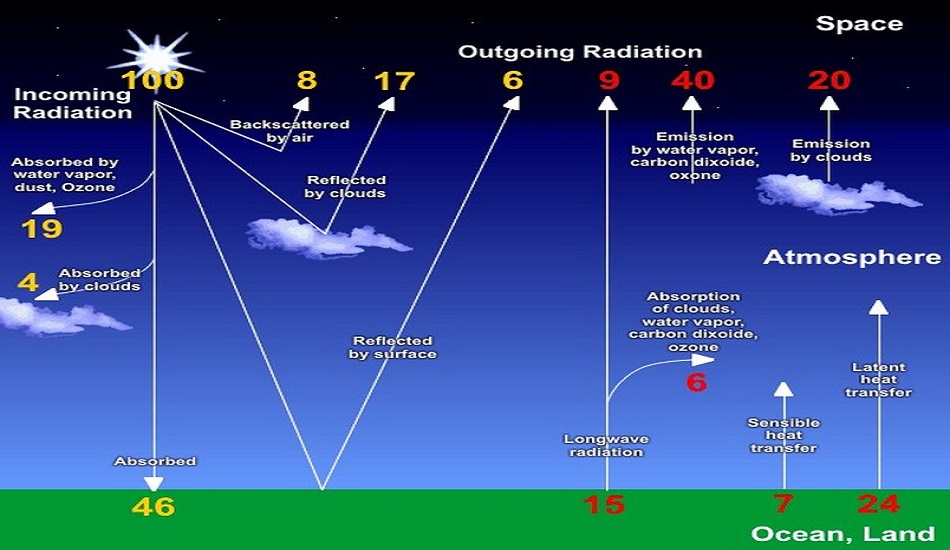
Earth's energy budget accounts for the balance between energy Earth receives from the Sun, and energy Earth radiates back into outer space after having been distributed throughout the five components of Earth's climate system and having thus powered the so-called "Earth’s heat engine". This system is made up of earth's water, ice, atmosphere, rocky crust, and all living things. The Earth receives around 46% - 50% of the total Sun Energy. This Energy can only be used.
Some Basic facts about solar energy calculation
- The Solar irradiance is the sun’s radiant power represented in W/m2 or KW/m2. The solar constant is the average value of solar irradiance outside the earth’s atmosphere, about 1366 W/m2.
- Typical peak value is 1000 W/m2 on a terrestrial surface facing the sun on the clear day around solar noon at the sea level, and used as a rating condition for PV modules and arrays.
Solar irradiation is the sun’s radiant energy incident on a surface of unit area, expressed in units of KWh/m2.
• Typically expressed on an average daily basis for a given month.
• Also referred to as solar insolation or peak sun hours. - Solar irradiation (energy) is equal to the average solar irradiance (power) multiplied by time.
- Peak sun hours (PSH) is the average daily amount of solar energy received on a surphace. PSH are equivalent to
• The number of hours that the solar irradiance would be at a peak level of 1 KW/m2
• Also the equivalent number of hours per day that a PV will operate at peak rated output levels at rated temperature.


